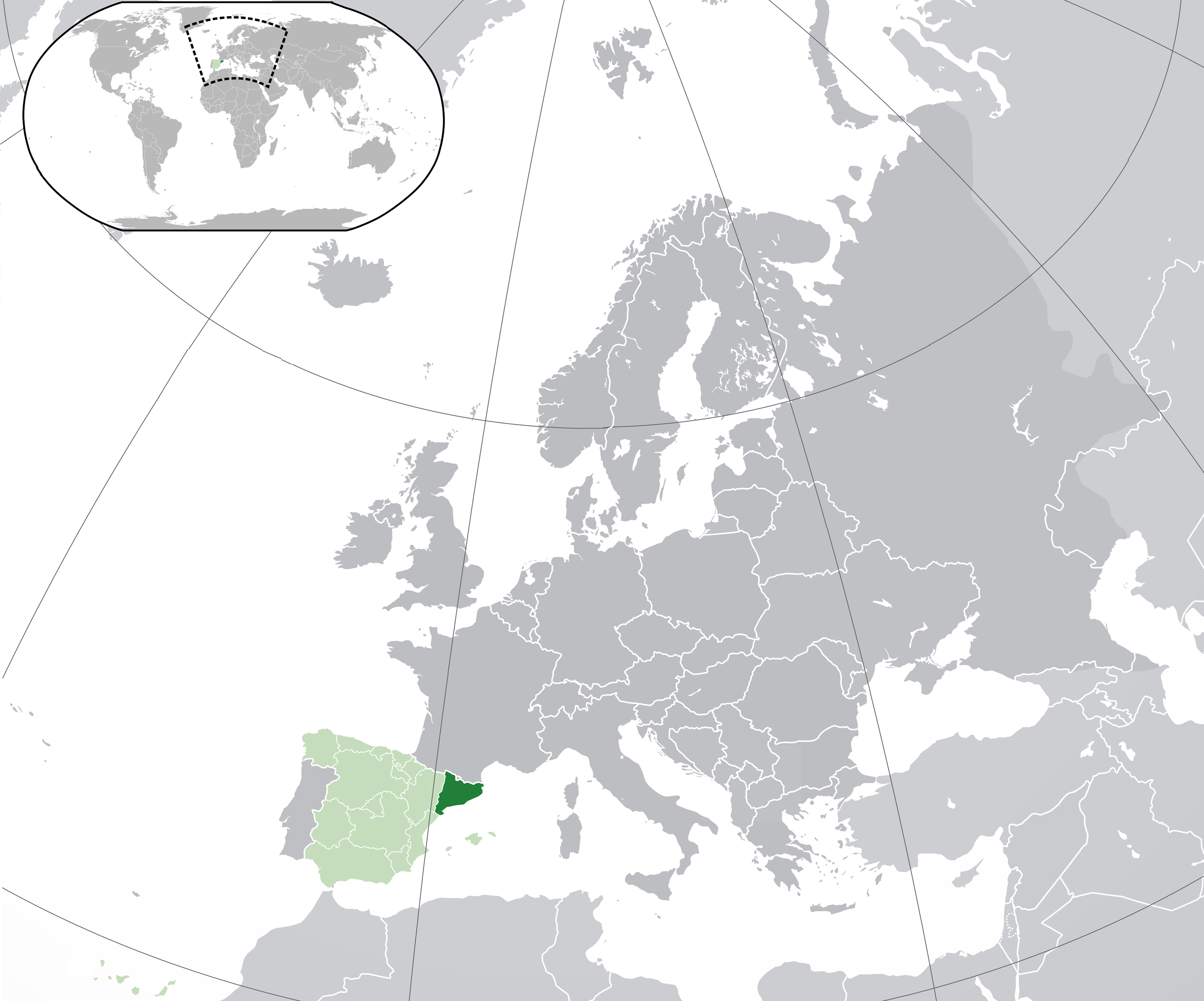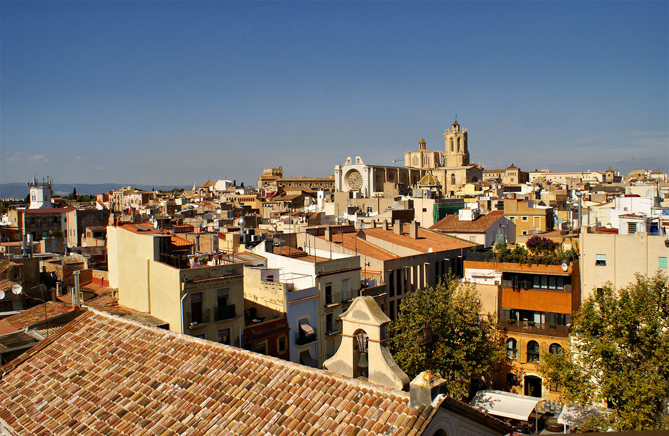|
Salvitxada
Salvitxada or salsa de calçots (''calçot sauce'') is a Catalan sauce originating in Valls, province of Tarragona in the region of Catalonia, which is served almost exclusively with calçots at the '' calçotades'', a traditional local barbecue. It is similar to romesco sauce with the difference that it is thickened with toast rubbed with fresh garlic, moistened with a little vinegar and pulverized. See also * List of sauces The following is a list of notable Culinary art, culinary and prepared sauces used in cooking and food service. General * * * * * * * * * * * * * * * * * * * – Creamy sauce accompanies with seafood * * * * * * ... * References Catalan cuisine Sauces {{Catalonia-cuisine-stub ... [...More Info...] [...Related Items...] OR: [Wikipedia] [Google] [Baidu] |
Catalan Cuisine
Catalan cuisine is the cooking traditions and practices from Catalonia. It may also refer to the shared cuisine of Northern Catalonia and Andorra, the second of which has a similar cuisine to that of the neighbouring Alt Urgell and Cerdanya ''comarca, comarques'' and which is often referred to as "Catalan mountain cuisine". It is considered a part of western Mediterranean cuisine. History There are several Catalan language cookbooks from the Middle Ages that are known to modern scholars. The ''Llibre del Coch'' (1520) was one of the most influential cookbooks of Spanish Renaissance, Renaissance Spain. It includes several sauce recipes made with ingredients such as ginger, Mace (spice), mace powder ('), cinnamon, saffron, cloves ('), wine and honey. ''Salsa de pagó'' took its name from the peacock () that it was intended to be served with, but could accompany any type of poultry, and was part of the medieval Christmas dinner#Spain, Christmas meal. ' (or ' as it's called in the ... [...More Info...] [...Related Items...] OR: [Wikipedia] [Google] [Baidu] |
Romesco
Romesco () is a tomato-based sauce that originated from Valls, province of Tarragona, in Catalonia, Spain. The fishermen in this area made this sauce to be eaten with fish. It is typically made from any mixture of roasted tomatoes and garlic, toasted almonds, pine nuts, and/or hazelnuts, olive or sunflower oil, and ''nyora'' peppers (''capsicum annuum'', a sun-dried, small, round variety of red bell pepper). Flour or ground stale bread may be used as a thickener or to provide texture. Other common ingredients include sherry vinegar, red wine vinegar, and onions. Leaves of fennel or mint may be added, particularly if served with fish or escargot. It is very often served with seafood, but can also be served with a wide variety of other foods, including poultry, some red meats like lamb, and vegetables. According to food writer Melissa Clark, cookbook author Penelope Casas was considered the recognized authority on romesco recipes for English-speaking readers. When touring Catalon ... [...More Info...] [...Related Items...] OR: [Wikipedia] [Google] [Baidu] |
List Of Sauces
The following is a list of notable Culinary art, culinary and prepared sauces used in cooking and food service. General * * * * * * * * * * * * * * * * * * * – Creamy sauce accompanies with seafood * * * * * * * (salsa roja) * * * – a velouté sauce flavored with tomato * * – prepared using mushrooms and lemon * * * * * * * * Prepared sauces * * * * * * * * * * * * * * * * * By type Brown sauces include: * * * * * * * * * * * Butter sauces * * * – Butter emulsified with water * Beurre noisette – Brown butter sauce * * Emulsified sauces * * * * * * * * * (w/ chilli) Fish sauces * * * * Green sauces * See Tomato sauces * * Hot sauces * Pepper sauces *Mustard sauces ** * Chile pepper-tinged sauces * Condiments made from hot sauce include: ** ** ** sauce ** sauce ** ** ** Meat-based sauces * * * * * * * * Pink sauces * See Pink sauce (disamb ... [...More Info...] [...Related Items...] OR: [Wikipedia] [Google] [Baidu] |
Valls
Valls () is a city and municipality in the Camp de Tarragona region in Catalonia, Spain. It is the capital of the comarca of Alt Camp. In 2014, it had a population of 24,570. Valls is known for its calçots – a type of scallion or green onion – and the human towers tradition known as the castells. The town is the birthplace of the composer Robert Gerhard (1896–1970). Geography Valls is the capital of the '' comarca'' of Alt Camp. With a population of 24,570 inhabitants in 2014, it represents more than half of the population of the county. It is located next to the River Francolí, near Reus (Baix Camp) and Tarragona ( Tarragonès), the capital of the Spanish province. Culture Valls is known for its culinary tradition, the feasting on calçots at what is known as a "calçotada". The calçots are a large type of sweet-flavoured spring onion, barbecued over a pit of flaming vines, and eaten piping hot with a sauce. The calçotada continues with a main course of me ... [...More Info...] [...Related Items...] OR: [Wikipedia] [Google] [Baidu] |
Province Of Tarragona
Tarragona (; ) is a province of eastern Spain, in the southern part of the autonomous community of Catalonia. It is bordered by the provinces of Castellón, Teruel, Zaragoza, Lleida and Barcelona and by the Mediterranean Sea. The province's population is 795,902 (2018), about one fifth of whom live in the capital, Tarragona. Some of the larger cities and towns in Tarragona province include Reus, Salou, El Vendrell, Tortosa, Valls, Amposta. This province has 183 municipalities. The province includes several World Heritage Sites and is a popular tourist destination. There are Roman Catholic cathedrals in Tarragona and Tortosa. History After the Umayyad conquest of Hispania in the late eighth century, this part of Spain came under the control of the Umayyad Caliphate and most of the Iberian peninsula was known as Al-Andalus, and was dominated by Muslim rulers. Abd al-Rahman I founded an independent dynasty that survived in the region until the 11th century. After the Musl ... [...More Info...] [...Related Items...] OR: [Wikipedia] [Google] [Baidu] |
Calçot
Calçot () is a type of green onion. The name ''calçot'' comes from the Catalan language. The calçot from Valls (Catalonia, Spain) is a registered EU Protected Geographical Indication. Calçots are milder and less bulbous than onions and have a length of between 15 and 25 cm (white part) and a diameter of 1.7 to 2.5 cm at the root. Planted in trenches, like an onion, as a single bulb, and successively increasing the depth of the soil around the stems throughout autumn and winter (see earthing up), they sprout into 4–10 shoots, roughly the shape of small leeks or scallions. The origin of the ''calçot'' and its cooking method is in the town of Valls, where an annual event celebrates the harvest of calçots. Nowadays, thousands of eating gatherings centered around the ''calçots'', called ''calçotades'' (singular: '' calçotada''), are celebrated around Catalonia. In these events, they are grilled over a hot fire, wrapped up in newspaper, served on terra cotta tile ... [...More Info...] [...Related Items...] OR: [Wikipedia] [Google] [Baidu] |
Barbecue
Barbecue or barbeque (often shortened to BBQ worldwide; barbie or barby in Australia and New Zealand) is a term used with significant regional and national variations to describe various cooking methods that employ live fire and smoke to cook food. The term is also generally applied to the devices associated with those methods, the broader cuisines that these methods produce, and the meals or gatherings at which this style of food is cooked and served. The cooking methods associated with barbecuing vary significantly. The various regional variations of barbecue can be broadly categorized into those methods which use direct and those which use indirect heating. Indirect barbecues are associated with US cuisine, in which meat is heated by roasting or smoking over wood or charcoal. These methods of barbecue involve cooking using smoke at low temperatures with long cooking times, for several hours. Elsewhere, barbecuing more commonly refers to the more direct application of heat ... [...More Info...] [...Related Items...] OR: [Wikipedia] [Google] [Baidu] |



